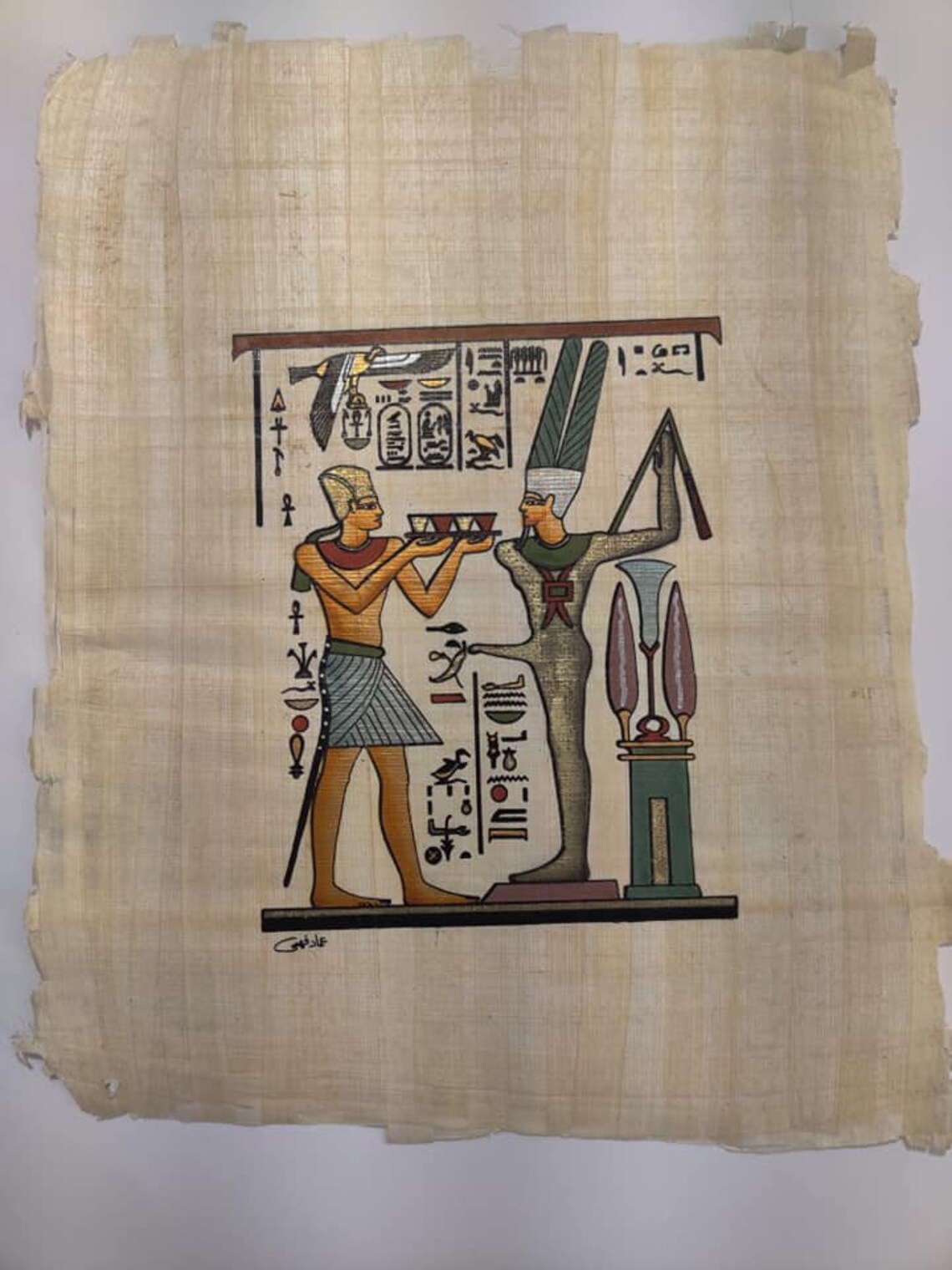

The ancient Egyptians used water wheels, which worked an invention of theirs called a shadoof. They built gates into the canals so that they could control the flow of water, and they built reservoirs to hold water supplies in case of drought. The Egyptians pioneered the use of canals and irrigation channels to direct water from the Nile River to farm fields that were distant from the river.

The sickle with its curved blade was used for cutting and harvesting grains, such as wheat and barley. Egyptian sickle Source: The Met/Wikimedia Commons Along the fertile banks of the Nile River, the ancient Egyptians grew wheat and various vegetables. Workers with hoes then broke up the clumps of soil and sowed the rows with seed. They were made of bronze, which easily scored the earth into furrows. The first ox-drawn plows appeared in Egypt as early as 2500 B.C. Eventually, they replaced the soot with other materials, such as red ochre, to create various colors of ink. The ancient Egyptians mixed vegetable gum, soot and bee's wax to make a black ink. Having papyrus to write on would have been of no use without the invention of ink. Ink Egyptian ink Source: Captmondo/British Museum/Wikimedia Commons These forty-five private documents date from the first half of the 1st century BC and were found in five crocodile mummies that had been buried next to each other. The only known ancient Egyptian library to survive to this day is the Tebtunis Temple Library, which is housed at the University of California, Berkeley, and contains the famous crocodile mummy texts. Crocodile mummy Source: Alensha/Wikimedia Commons

The papyrus rolls found there describe the last years of the building of the Great Pyramid of Giza. The earliest evidence of papyrus was unearthed in 2012 at Wadi al-Jarf, an ancient Egyptian harbor located on the Red Sea coast, and dates to 2560 – 2550 BC. RELATED: THE SCIENCE OF NAPOLEON - THE METRIC SYSTEM AND HIEROGLYPHICS The ancient Egyptians turned the pith of the Cyperus papyrus plant, which is found throughout the Mediterranean region, into sheets which could be rolled into scrolls. This makes Egyptian hieroglyphics the ancestor of most scripts in use today. Later, hieratic and demotic Egyptian scripts were derived from hieroglyphics, as were the Greek and Aramaic scripts. RELATED: EXPLORE 33 INTERESTING FACTS ABOUT THE ANCIENT EGYPTIAN PYRAMIDS The earliest form of Egyptian writing was hieroglyphics, which combined logographic, syllabic and alphabetic elements, and had a total of some 1,000 distinct characters. The ancient Egyptians were among the first groups of people to write and to keep records. Writing Egyptian hieroglyphics Source: Sherif217/Wikimedia Commons Bronze tools, weapons, armor, building materials, and decorative items have been found. Metal Making Egyptian bronze statues Source: Andrew Bossi/Wikimedia CommonsĪround 3000 BC, the Egyptians discovered that by mixing a small amount of tin ore in with copper ore, they could make bronze.īronze is harder and more durable than other metals of that time, and this archeological period became known as the Bronze Age. The ancient Egyptians would come to invent mathematics, geometry, surveying, metallurgy, astronomy, accounting, writing, paper, medicine, the ramp, the lever, the plow, and mills for grinding grain.

RELATED: 35 INVENTIONS THAT CHANGED THE WORLD


 0 kommentar(er)
0 kommentar(er)
